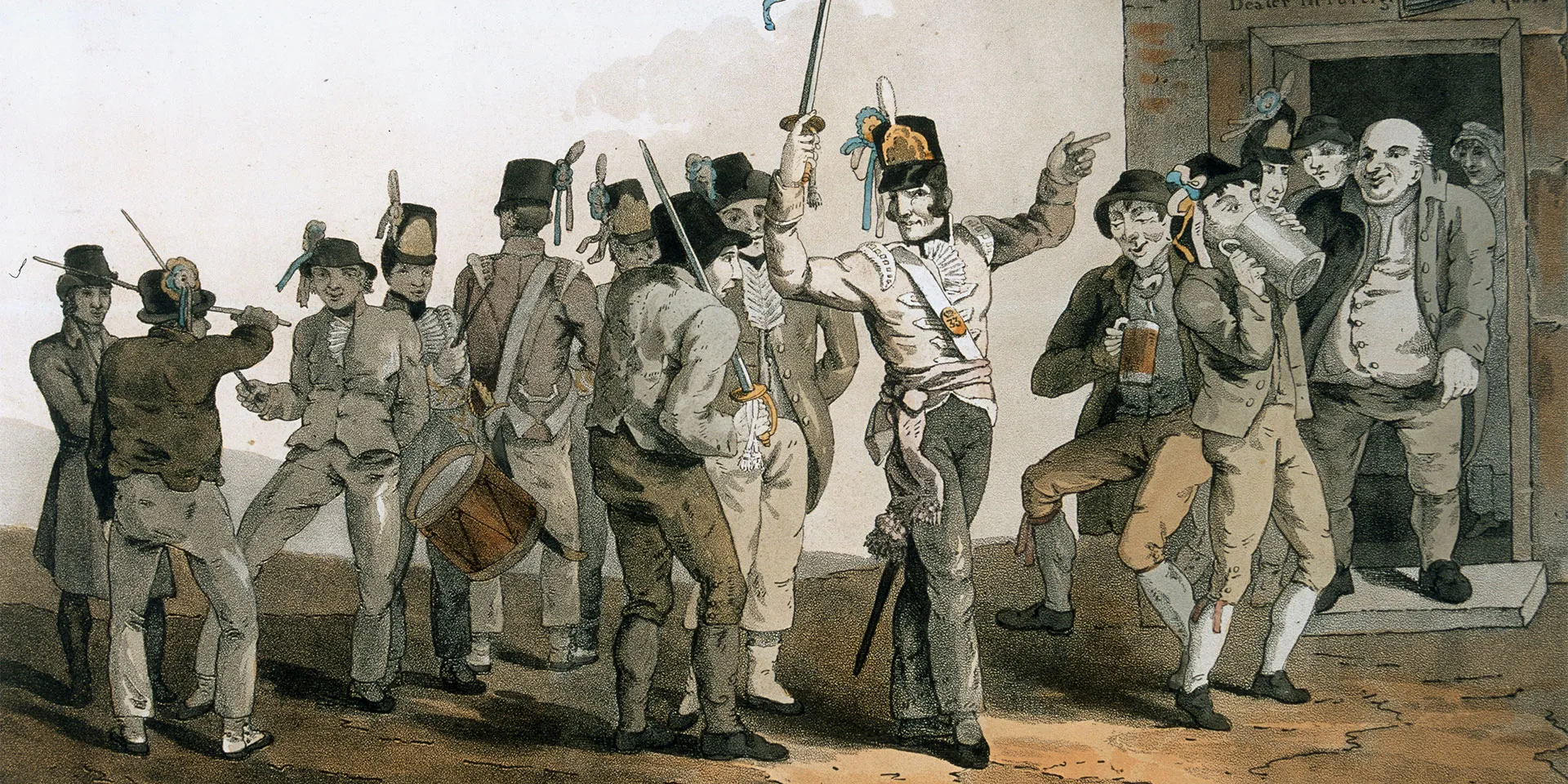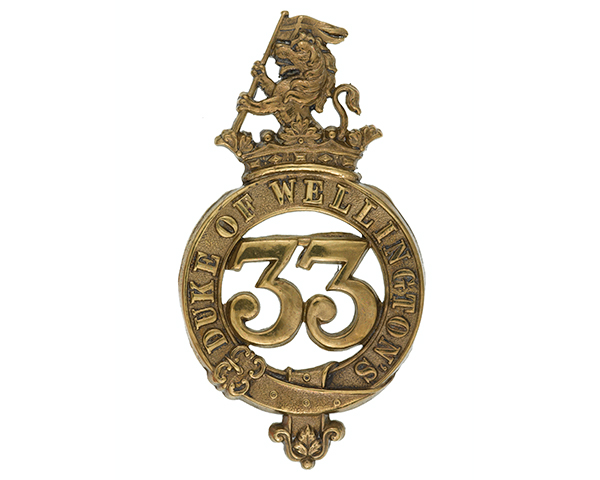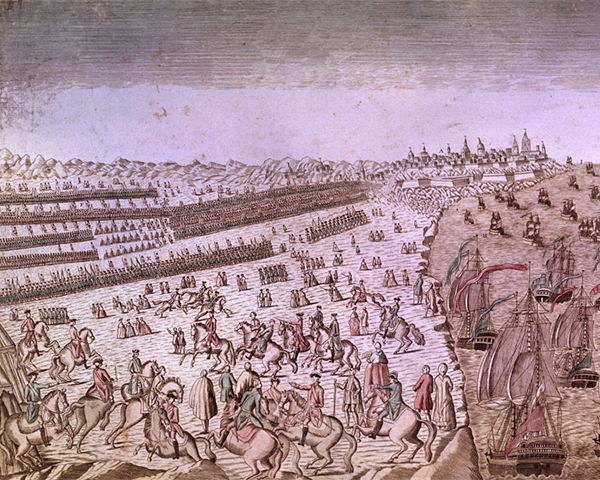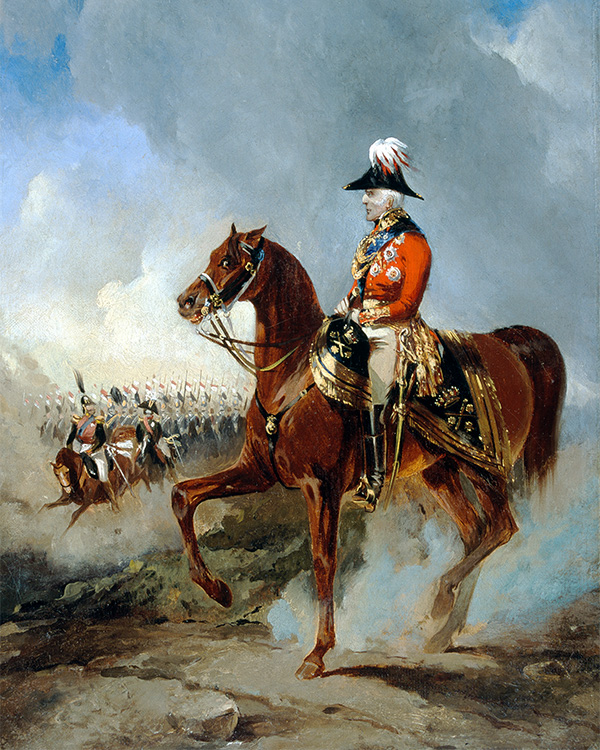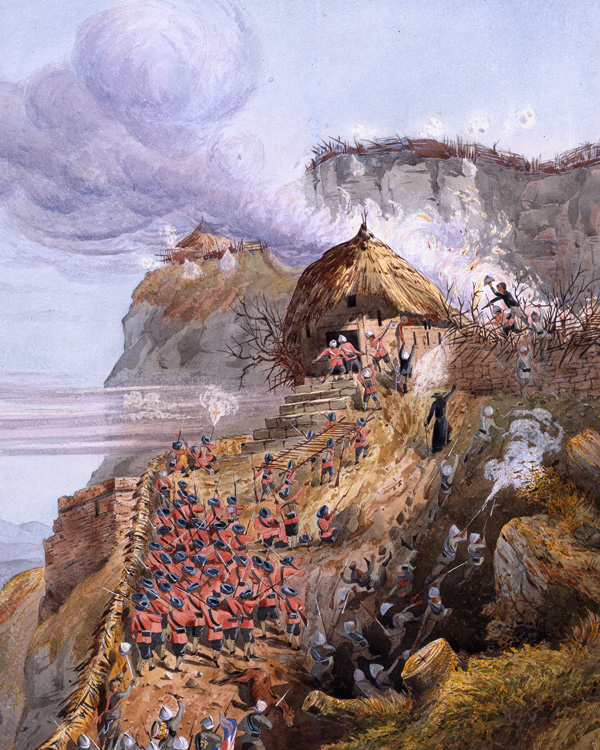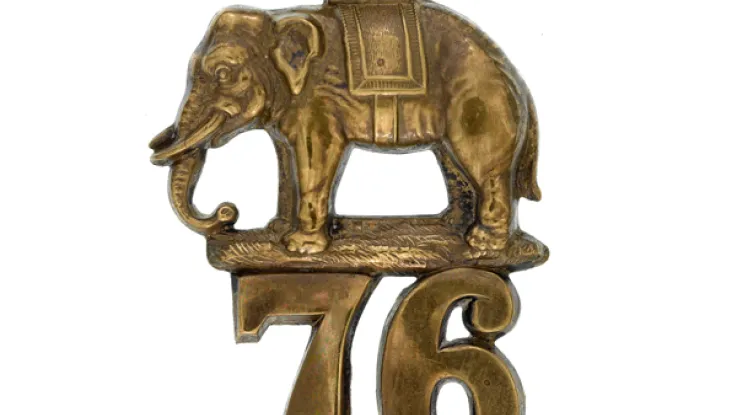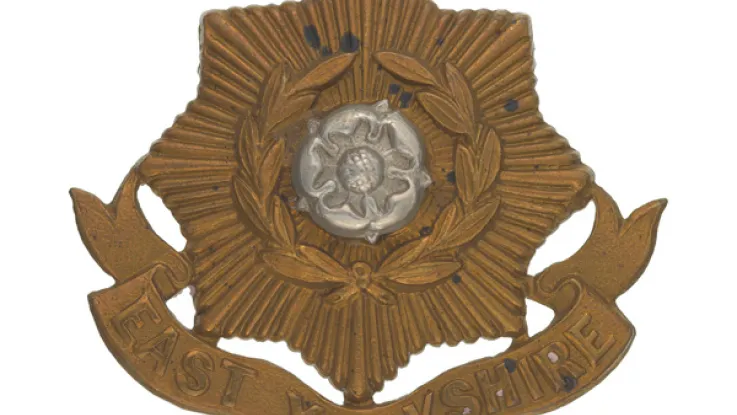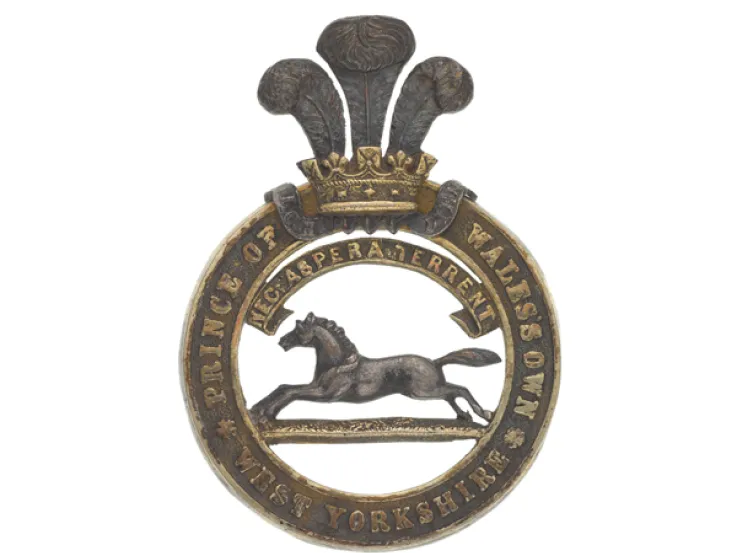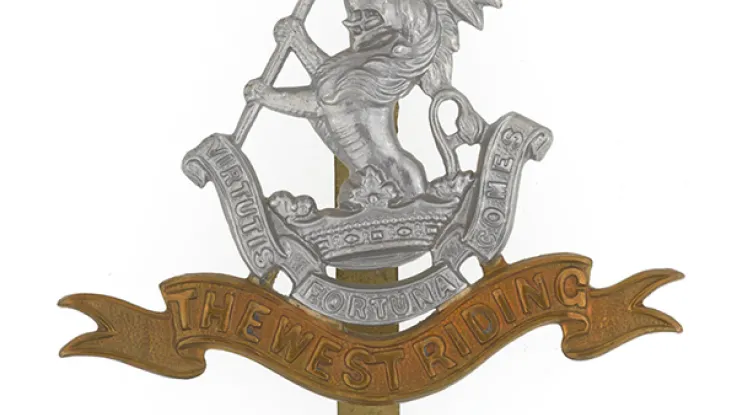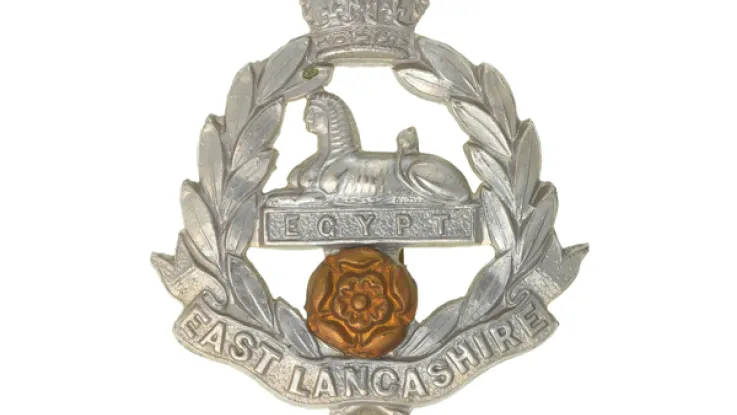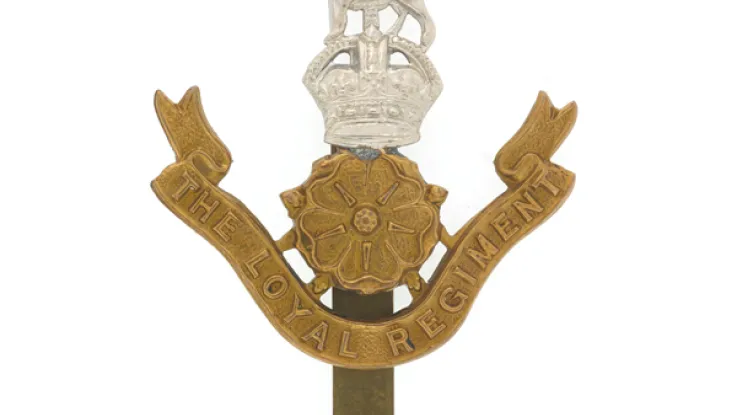Explore more from Regiments and Corps
33rd (The Duke of Wellington’s) Regiment of Foot
4 minute read
Origins
In 1702, the Earl of Huntingdon raised a regiment in Gloucestershire to fight in the War of the Spanish Succession (1702-13). It was immediately sent to Flanders before moving to Portugal in 1704, where it took part in the storming of Alcantara. However, it suffered heavy casualties at the Battle of Almanza in 1707, with the survivors becoming prisoners of war.
The regiment had re-formed in Britain by 1710, possibly following the release and repatriation of its original personnel. It then garrisoned Ireland from 1713 to 1715. During this time, it was briefly disbanded in March 1714, only to be raised again nine months later.
Early 18th century
The regiment moved to England for 15 years in 1715, although it was used briefly for raids on the Spanish coast in 1719. A long period in Ireland followed from 1730.
In 1742, the regiment was sent back to the Continent for the first time in over 20 years, where it won its first battle honour at Dettingen (1743) during the War of the Austrian Succession (1740-48). It was recalled to England then sent to Scotland to face the Second Jacobite Rebellion in 1745, but a year later was back in Flanders, fighting at Rocoux and Lauffeld in 1747.
From 1749 to 1753, it garrisoned the new British colony of Minorca, during which time it was given the number 33 in the order of precedence. After that, it remained in England until the Seven Years War (1756-63), when it was used in raids against St Malo and Cherbourg on the French coast (1758) before moving to Germany.
North America
The 1770s saw the 33rd Foot serving in Minorca and the West Indies, before finally being sent to fight in the American War of Independence (1775-83) in 1776. It stayed in that theatre until October 1781, when most of the regiment was captured at Yorktown and interned until the end of the conflict.
A detachment from the regiment was in Charleston at the time of the capture and so escaped this fate. It moved to Canada, where the 33rd was first given its county association with the West Riding of Yorkshire in 1782.
The regiment’s main body was released in 1783 and joined the detachment in Canada, staying there until 1786. In 1793, Arthur Wellesley (the future Duke of Wellington) was made a major in the regiment, later becoming its lieutenant colonel, then its colonel.
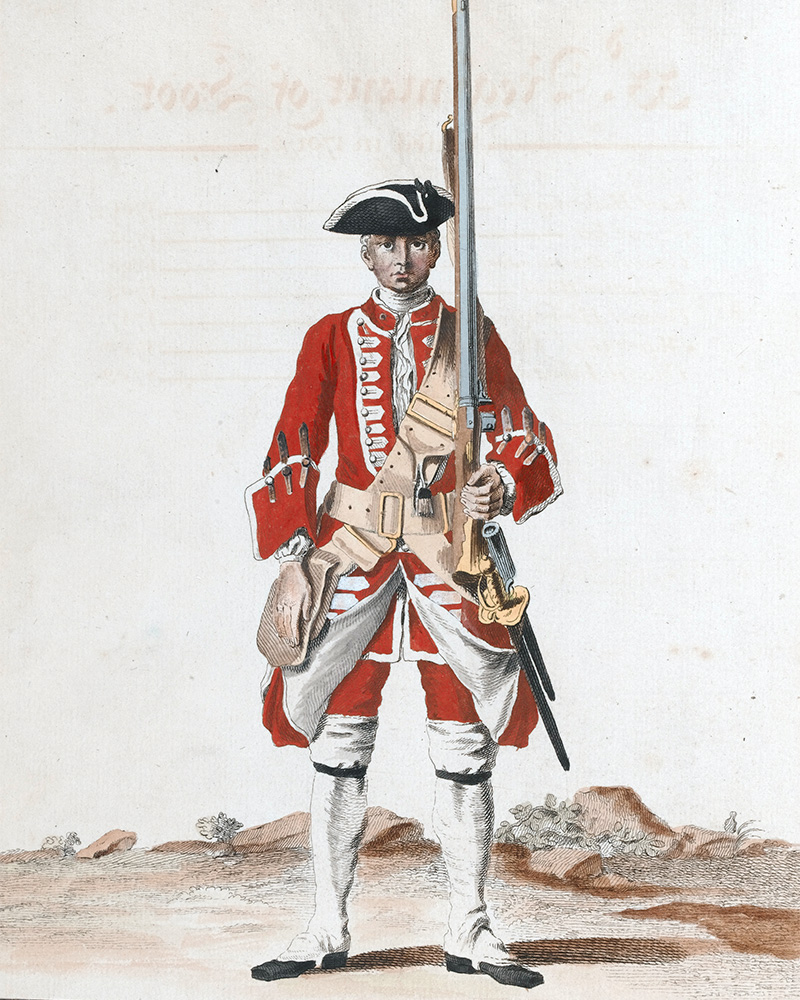
A soldier of the 33rd Regiment of Foot, c1742
Late 18th century
Companies from the regiment were simultaneously stationed in the West Indies and Flanders at this time. But they had all reunited in England by 1796, when they were sent first to South Africa and then India.
The regiment remained in India for 16 years, fighting in the Fourth Mysore War (1798–99) and helping to capture Seringapatam (1799). It then served on Mauritius.
Napoleonic Wars
It was recalled home in 1812 and fought in the Low Countries from 1813 to 1814, and again in 1815 at Quatre Bras and Waterloo. It then occupied France for a few months before returning to England.
Victorian period
The regiment spent much of the next 40 years garrisoning England, Scotland and Ireland. Exceptions included ten years in Jamaica from 1822, five in Gibraltar from 1836, a further two in the West Indies from 1841, and five more in Canada from 1848.
On Waterloo Day (18 June) 1853, nine months after the death of the Duke of Wellington, Queen Victoria renamed the regiment in his honour and granted it his motto and crest. This made it the only regiment, after 1782, to bear the name of a non-royal.
A year later, the 33rd was sent to the Crimea, where it fought at Alma (1854), Inkerman (1854) and Sevastopol (1855).
It also served in India for ten years from 1857, including on Mauritius and during the Mutiny. On its voyage home, it was briefly diverted to Ethiopia to fight in the campaign against Emperor Tewodros II of Abyssinia in 1868.
Legacy
Its final independent overseas posting came in 1875, again to India. It was there that it merged with the 76th Regiment of Foot to form The Duke of Wellington’s Regiment (West Riding) in 1881.
Regimental museums
The National Army Museum works with a network of Regimental and Corps Museums across the UK to help preserve and share the history and traditions of the Army and its soldiers.
Discover more about the 33rd (The Duke of Wellington's) Regiment of Foot by visiting the Duke of Wellington's Regiment Museum in Halifax.

